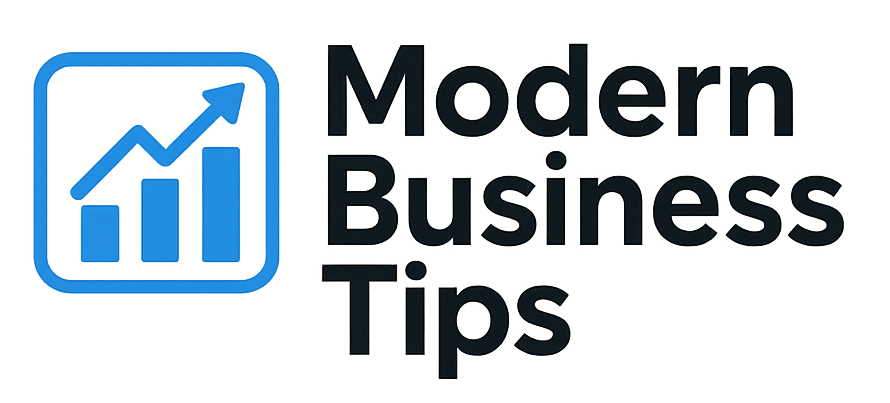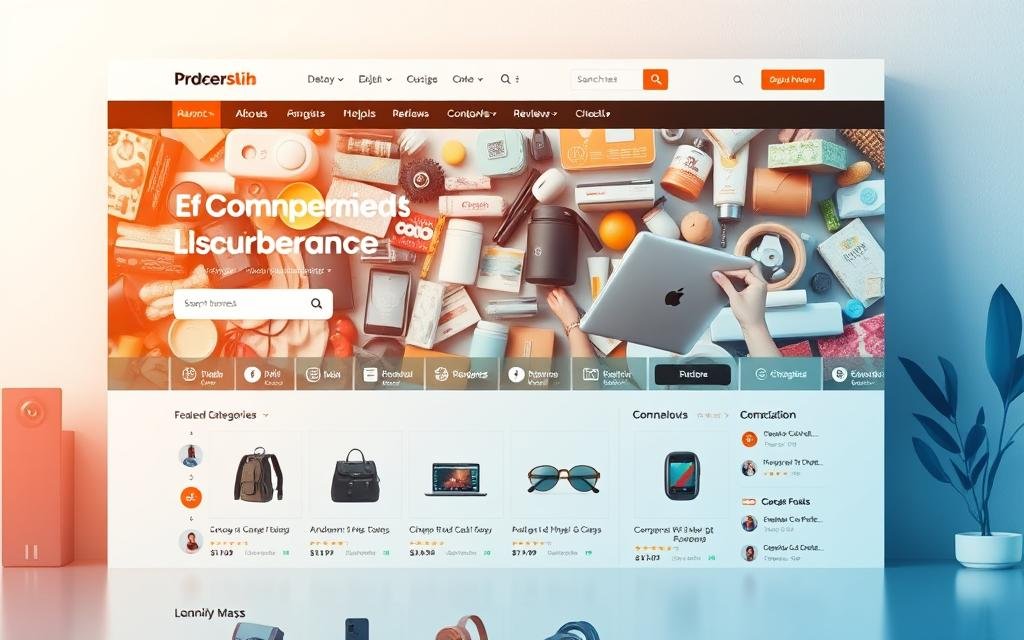An ecommerce website is a digital space where businesses sell products and services online. It connects buyers and sellers across the globe. This model makes transactions easy and fast.
Exploring ecommerce shows it’s more than just another sales channel. It’s a big change in how we shop. In 2023, sites like Amazon saw a 22% jump in sales. So, knowing about ecommerce websites is key for those entering online retail.
In today’s fast-changing market, many businesses count on ecommerce for most of their income. It’s changing how we shop and how businesses plan.
Key Takeaways
- Ecommerce websites enable direct sales from businesses to consumers.
- The growth of ecommerce is reshaping the retail landscape.
- Understanding ecommerce site design is key for success.
- Online shopping trends have grown a lot in 2023.
- Ecommerce is both a channel and a major income source for many businesses.
- It connects sellers with buyers online, without limits.
Understanding Ecommerce Websites
Ecommerce has changed how we shop and do business. It’s fascinating to see how it lets us buy and sell goods and services online.
Definition of Ecommerce
The definition of ecommerce covers many online deals. It includes both physical items and digital services. It makes shopping and business easier for everyone.
Brief History of Ecommerce
The brief history of ecommerce starts in 1994. That’s when the first online sale happened, selling a Sting CD. This showed people wanted to shop online more.
Now, ecommerce is a big online market. It has grown a lot from that first sale.
Key Features of Ecommerce Sites
The key features of successful ecommerce sites are important. They make online shopping easy. Some key things include:
- User-friendly interfaces that simplify navigation
- Secure payment gateways to protect customer information
- Efficient product management systems for easy inventory tracking
- Robust customer service functionalities, ensuring support when needed
Types of Ecommerce Models
Ecommerce offers many business models for different needs and markets. Knowing these models helps use ecommerce sites better. Here are four main models, each with its own way of selling online and different from traditional retail.
B2C (Business to Consumer)
The B2C model means businesses sell directly to people. Brands like Amazon and Walmart are great examples. This model is different from traditional retail because it uses online platforms to reach many people.
B2B (Business to Business)
B2B deals happen between businesses, like manufacturers selling to wholesalers. Alibaba is a big name in this area, helping with big orders and logistics. This model focuses on big deals, unlike selling to individual customers.
C2C (Consumer to Consumer)
The C2C model lets people sell to other people. Sites like eBay and Etsy are perfect for this. Here, people can sell things they no longer need, showing the benefits of ecommerce.
C2B (Consumer to Business)
C2B is the opposite, where people sell to businesses. Platforms like Upwork and Fiverr show this. It’s a way for individuals to offer their services to companies, giving them a chance in traditional retail.
Benefits of Having an Ecommerce Website
Having an ecommerce website changes how businesses work. It offers many benefits, like being easy to access and cost-effective. It also helps businesses reach more people.
Accessibility and Convenience
Online shopping is super convenient. Customers can buy from anywhere, anytime. This makes them happy and boosts sales.
Cost-Effectiveness
Online stores are cheaper to run than physical ones. They save money on rent, staff, and stock. This means businesses can keep costs low while being open 24/7.
Increased Reach and Audience
Online stores can reach people all over the world. This is a big plus for businesses. In 2023, many US online sellers saw big sales increases by selling to global customers.
Essential Components of an Ecommerce Website
Building a good ecommerce website needs many key parts. These parts make sure the site works well and looks good. Here are the main features of ecommerce sites that help keep customers happy and make things run smoothly.
User-Friendly Interface
A good website is easy to use. It should let customers find what they need without getting lost. With clear categories and a simple design, users can easily find products. This makes them more likely to buy.
Secure Payment Gateway
Online shopping needs to be safe. A secure payment system keeps customer info safe. Using strong encryption and many payment options makes customers trust your site more. This safety also makes the shopping experience better.
Mobile Responsiveness
More and more people shop on their phones. So, your website must work well on all devices. A site that looks good on phones lets customers shop anywhere. This means more chances to sell.
Product Management Systems
Keeping track of stock is key for online stores. A good system helps manage inventory and sales. It makes running the business easier and keeps customers happy.
| Component | Description | Importance |
|---|---|---|
| User-Friendly Interface | Enables easy navigation and enhances browsing experience. | Increases customer engagement and conversion rates. |
| Secure Payment Gateway | Protects customer data during transactions. | Builds trust and ensures safe purchases. |
| Mobile Responsiveness | Adapts site layout for mobile and tablet devices. | Expands accessibility to a broader audience. |
| Product Management Systems | Facilitates tracking of inventory and sales data. | Improves operational efficiency and planning. |
How to Create an Ecommerce Website
Starting an ecommerce website needs careful planning. The first step is choosing the right platform. Options like Shopify or WooCommerce can affect your site’s functionality. Each platform meets different business needs and budgets.
Choosing the Right Platform (e.g., Shopify, WooCommerce)
Choosing a platform involves looking at each option’s features. Shopify is easy to use with many templates. WooCommerce is better for tech-savvy users. Knowing what my business needs helps me decide.
Domain Name and Hosting Selection
Next, I pick a memorable domain name. It should match my brand and appeal to customers. Reliable hosting is also key for fast website performance and easy access. This choice affects how quickly pages load and the customer’s experience.
Designing Your Storefront
Designing my storefront means adding brand elements that appeal to my audience. I aim for a layout that showcases products well. I follow ecommerce best practices to engage users and boost sales through a user-friendly design.
Ecommerce Website Optimization Strategies
Optimizing an ecommerce website is key for better performance and sales growth. Using strong SEO best practices helps improve visibility in search results. This attracts more organic traffic. Making the site user-friendly is also important to keep visitors interested and encourage purchases.
By focusing on mobile optimization, I ensure customers have a smooth experience on their devices. This leads to higher engagement rates.
SEO Best Practices
Effective SEO involves several important steps. I make sure to include relevant keywords in product descriptions and titles. Creating unique, engaging content adds value and boosts search rankings.
Keeping my site’s metadata and alt text for images up to date also helps. Adding internal links encourages customers to explore more, which can lead to more sales.
User Experience Enhancements
Improving user experience starts with a clear navigation structure. Easy-to-use menus help customers find what they need quickly, reducing bounce rates. Streamlining the checkout process is also key to reducing cart abandonment.
Offering real-time chat support helps solve customer issues, making them happier with their shopping experience.
Mobile Optimization Techniques
As more people shop on mobile, optimizing for mobile is essential. I make sure my website works well on all screen sizes. Fast-loading pages are important for keeping users engaged, so I use image compression and lazy loading.
Testing on different devices ensures a smooth shopping experience for everyone.
Marketing Your Ecommerce Website
To succeed in online retail, effective marketing is key. I use different channels to build a strong presence, engage customers, and boost sales. Social media, email marketing, and influencer collaborations are my main focuses. These strategies help increase brand awareness and build trust.
Social Media Marketing
I focus on creating engaging content for my audience on platforms like Facebook, Instagram, and Twitter. With 63% of the world using social media, ignoring it means missing out. I use visuals and interactive posts to draw in users and showcase my products.
Email Marketing Campaigns
Emails are a direct way to talk to interested customers. I send personalized emails with promotions and updates to build strong relationships. Marketers see email marketing as the best way to get a return on investment, with 87% agreeing. It keeps my audience informed and encourages them to buy.
Influencer Collaborations
Working with influencers can greatly increase my brand’s reach and trust. Influencer marketing is effective because people trust recommendations from those they follow. By teaming up with creators who share my values, I reach new customers. Nano-influencers, with fewer than 10,000 followers, are affordable, costing $5 to $100 per post.
By using these marketing strategies, I boost visibility and build a loyal customer base. For more tips, I check out ecommerce marketing resources to stay current with best practices and trends.
Measuring Success: Key Metrics for Ecommerce
To check how well my ecommerce does, I look at key metrics. These metrics give me insights that help me make better decisions. They help me grow my business and make more money.
Conversion Rate Tracking
Tracking conversion rates is very important. It shows how many visitors buy something. By looking at this, I can find out what’s stopping people from buying and fix it. When more people buy, it means my marketing and products are working well.
Average Order Value Analysis
The average order value is another important metric. It shows how much customers spend in one go. If I can get customers to spend more, I can make more money without getting more visitors. I can do this by selling more together or by suggesting more products.
Customer Retention Rates
Customer retention rates show how well I keep customers coming back. If more customers keep buying, it means they’re happy with what they get. To keep customers, I focus on good customer service and loyalty programs. This helps my business grow.
Future Trends in Ecommerce
Ecommerce is changing fast, thanks to new tech and what people want. Looking at the future, we see big changes in how businesses work and talk to customers. Knowing these trends is key for success in this fast-paced world.
Rise of AI and Personalization
AI is making a big splash in ecommerce. It helps businesses understand what customers want and give them what they need. AI makes shopping better by matching products and messages to each person’s taste. As AI grows, we’ll see more personal shopping experiences become the norm.
Sustainability and Eco-Friendly Practices
More people want to shop in a way that’s good for the planet. This means brands need to be green. It’s not just a trend; it’s a big change in how we shop. Brands that care about the environment will win over customers who do too.
Omnichannel Shopping Experiences
Creating a smooth shopping experience across all platforms is essential. Today’s shoppers use many places to find what they need. By making shopping easy and consistent, businesses can keep customers happy and loyal. Embracing these trends helps businesses grow and connect better with their customers.



